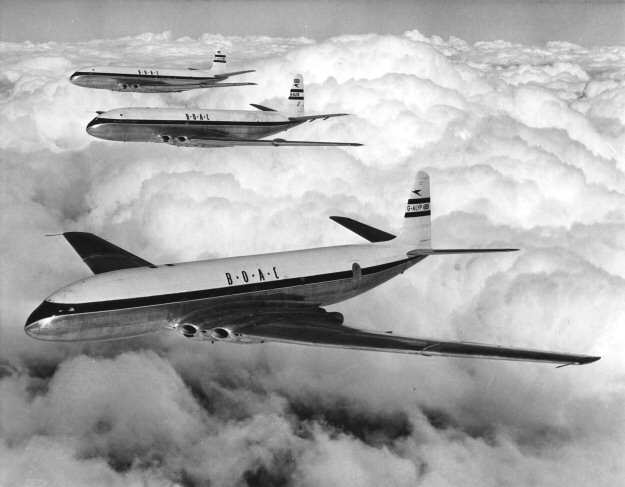
10 January 1954: British Overseas Airways Corporation Flight 781 departed Ciampino Airport, Rome, Italy, at 0931 UTC, enroute to Heathrow Airport, London, England. The airliner was the first production de Havilland DH.106 Comet I, G-AYLP, serial number 06003. The flight crew were Captain Alan Gibson, First Officer William John Bury, Engineer Officer Frances Charles McDonald and Radio Officer Luke Patrick McMahon. There were two flight attendants, Frank L. Saunders and Jean Evelyn Clark, and 29 passengers. After departure began climbing toward its cruise altitude of 27,000 feet (8,230 meters).
At 0951 UTC, 20 minutes after takeoff, Captain Gibson was conversing by radio with another BOAC flight. It is presumed that Flight 781 had reached its cruise altitude. Captain Gibson was heard to say, “George How Jig from George Yoke Peter [the phonetic alphabet call signs for Argonaut G-ALHJ and Comet G-AYLP] did you get my—” and the transmission suddenly ended. Nothing more was heard from Flight 781 and it did not arrive at its destination.
Several fishermen had seen the airliner crash into the Mediterranean Sea near the island of Elba and recovered bodies of the victims, which were found to have suffered the effects of explosive decompression.
Wreckage of Comet G-AYLP was found on the sea floor, 12 February 1954, and it was apparent that the airliner had broken up in flight. Consideration was given to the possibility of a bomb having been placed aboard, or that an uncontained turbojet engine failure had penetrated the pressure cabin resulting in a structural failure of the fuselage through explosive decompression.
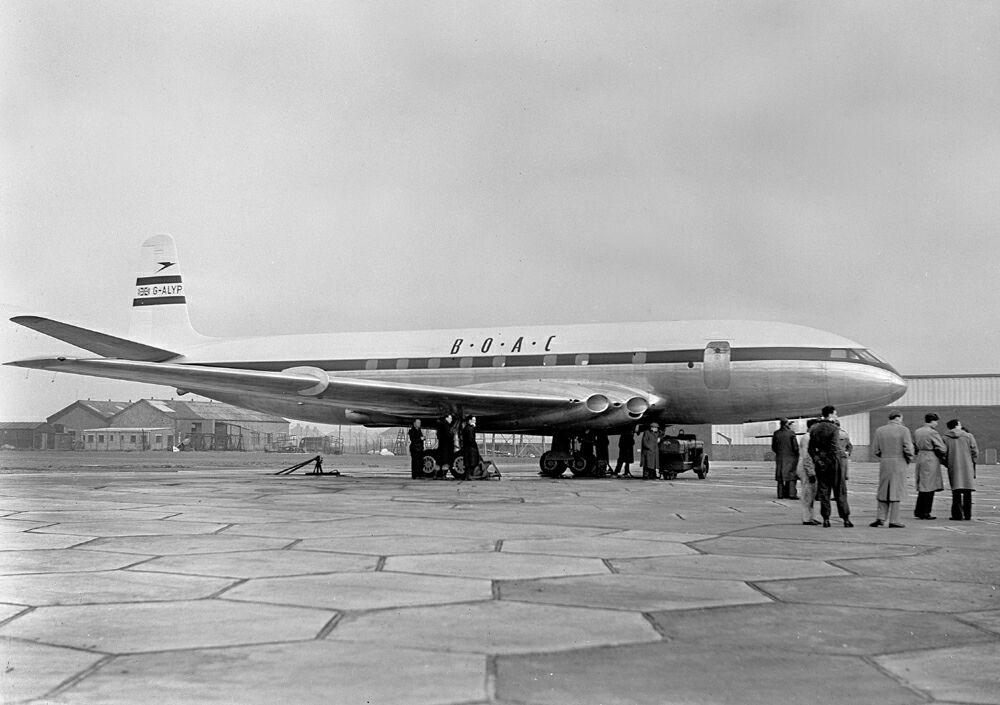
After two prototypes, G-AYLP was the first production Comet. It was the fourth DH.106 to be lost in just over fourteen months. With the cause of Flight 781’s crash undetermined, B.O.A.C. grounded its remaining Comet airliners. De Havilland engineers recommended more than 60 modifications to improve perceived weaknesses in the Comet fleet.
Extensive testing by the Royal Aircraft Establishment determined that the Comet’s pressurized fuselage could be expected to fail from metal fatigue after 1,000 pressurization/depressurization cycles. G-AYLP had experienced 1,290 pressurization cycles during the 3,681 hours it had flown since its first flight, 9 January 1951.
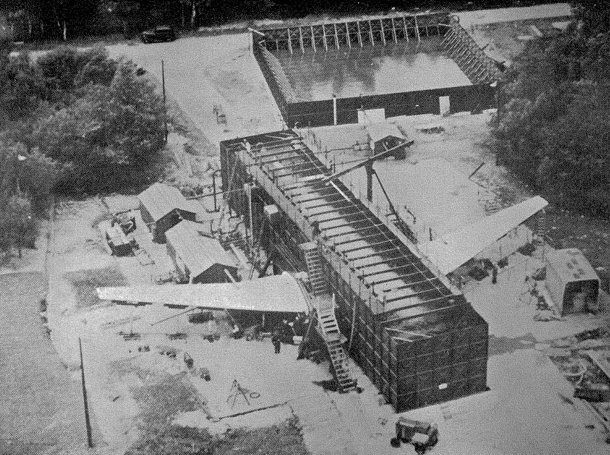
Reconstruction of G-ALYP’s fuselage revealed that a fatigue crack had begun at a rivet hole of a square opening for the airplane’s automatic direction finder antenna. With the differential in pressure from inside and outside the passenger cabin, this crack had spread along the top of the fuselage through a passenger window and back to to the elevators at the tail. The fuselage structure then failed explosively and the airplane’s tail section came off. The wings then failed and fuel carried inside caught fire. The cockpit section tore away from the remaining fuselage section.
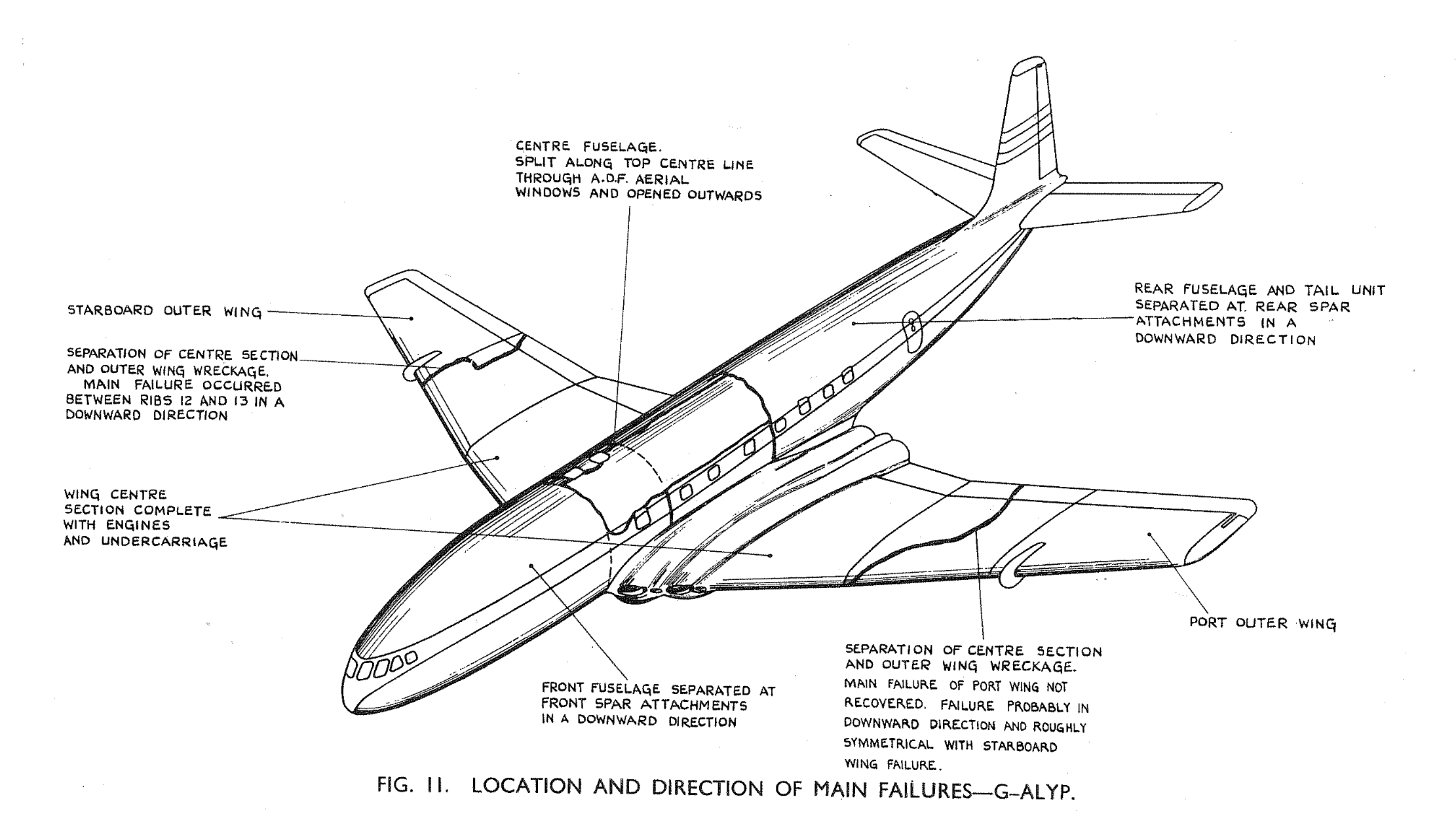
In reporting the Probable Cause of the destruction of G-AYLP, the committee wrote,
We have formed the opinion that the accident at Elba was caused by structural failure of the pressure cabin, brought about by fatigue. We reach this opinion for the following reasons:
(i) The low fatigue resistance of the cabin has been demonstrated by the test described in Part 3, and the result is interpretable as meaning that there was, at the age of the Elba aeroplane, a definite risk of fatigue failure occurring.
(ii) The cabin was the first part of the aeroplane to fail in the Elba accident.
(iii) The wreckage indicates that the failure in the cabin was the same basic type as that produced in the fatigue test.
(iv) This explanation seems to us to be consistent with all the circumstantial evidence.
(v) The only other defects found in the aeroplane were not concerned at Elba, as demonstrated by the wreckage.
—Report of the Public Inquiry into the causes and circumstances of the accident which occurred on the 10th January 1954, to the Comet aircraft G-AYLP.
Four months later, April 8 1954, a Comet 1 operated by South African Airways as Flight 201 from Rome to Cairo, G-ALYY, crashed near Naples, Italy with the deaths of all 21 persons aboard. The airplane had explosively broken up at an altitude of 35,000 feet (10,668 meters).
The de Havilland DH.106 Comet fleet was grounded and the Ministry of Transportation withdrew the type’s Certificate of Airworthiness. Production of the airliner at Hatfield came to a stop.
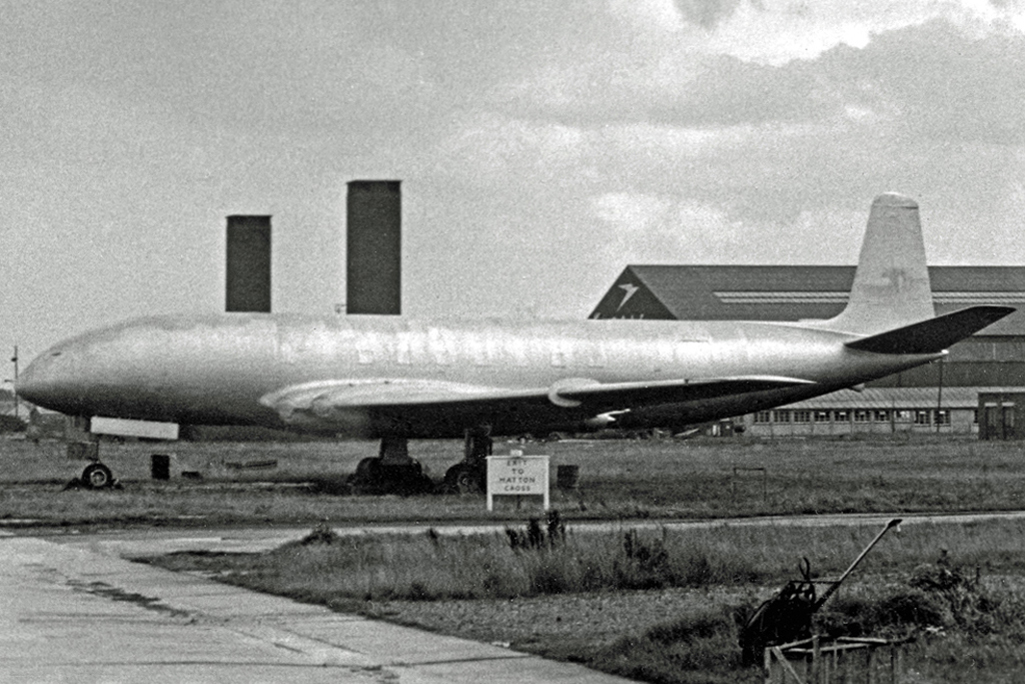
De Havilland redesigned the Comet, and as the Comet 4 it had a successful career in airline operation. It eventually lost out to the faster, longer range Boeing 707 and Douglas DC-8. Production ceased in 1964 and B.O.A.C. retired its last Comet in 1965.
The Comet was again redesigned as the Hawker Siddeley Nimrod maritime reconnaissance aircraft.
© 2016, Bryan R. Swopes